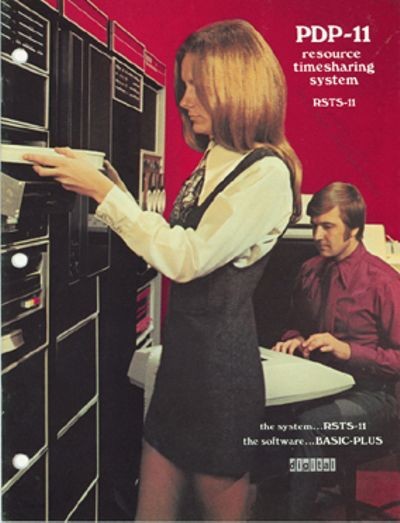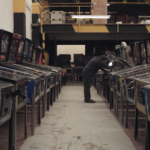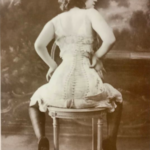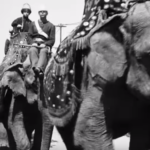Library Council Awards Grants to Nine Audiovisual Collections
The Council on Library and Information Resources, an independent, nonprofit organization based in Arlington, Virginia, that works to enhance research, teaching, and learning environments in collaboration with libraries, cultural institution, and communities of higher learning, has awarded its Recordings at Risk grants to 20 institutions.
Among the 20 awards, 9 relate to audiovisual collections, and they range in value from $10,908 to $50,000.
This is the fifth group of projects supported by the Recordings at Risk awards program, a national program administered by CLIR to support the preservation of rare and unique audio and audiovisual content of high scholarly value. Funded by The Andrew W. Mellon Foundation, the program will run four more competitions between May 2019 and April 2021, awarding a total of $2.2 million. CLIR makes the awards based on four primary criteria: projects’ potential scholarly and public impact, the urgency of reformatting to avoid loss, the viability of long-term preservation, and overall cost-effectiveness of proposals.
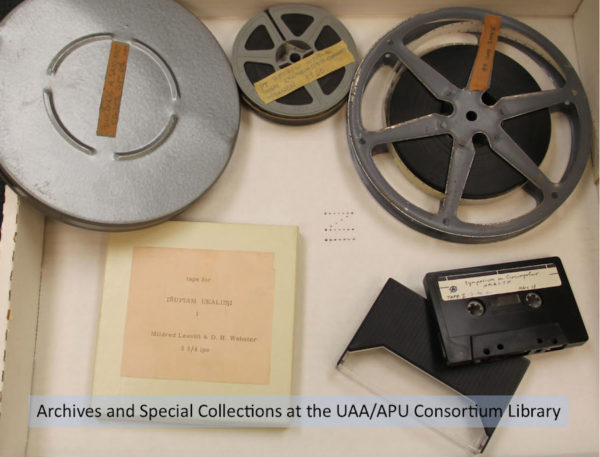 With its grant, the University of Alaska Anchorage / Alaska Pacific University Consortium Library Archives and Special Collections will digitize audio, video, and film documenting the history of public health in Alaska and the circumpolar north. Most of the material is currently unavailable to researchers due to the obsolescence of equipment and media and the risk of damage from playback. These materials encompass different facets of health and social science research, which are of interest to current public health physicians and those studying the practice and establishment of health programs and institutions in the last frontier.
With its grant, the University of Alaska Anchorage / Alaska Pacific University Consortium Library Archives and Special Collections will digitize audio, video, and film documenting the history of public health in Alaska and the circumpolar north. Most of the material is currently unavailable to researchers due to the obsolescence of equipment and media and the risk of damage from playback. These materials encompass different facets of health and social science research, which are of interest to current public health physicians and those studying the practice and establishment of health programs and institutions in the last frontier.
Also awarded a grant, for its Cross-Cultural Dance Resources Collections Media Digitization Project, subtitled Preserving and Providing Access to the Audiovisual Materials of an “American Treasure” of Dance Ethnology Scholarship and World Cultural Heritage, was Arizona State University. In 2000, the White House Millennium Project recognized the CCDR Collections as an “American Treasure.” They provide on-site and online access to research materials for the interdisciplinary study of dance culture. The CCDR humanities research center holds archival collections of dance scholars, as well as more than 15,000 monographs, journals, photos, films, video and audio recordings, dolls, textiles, cultural artifacts, musical instruments, masks, costumes, and puppets. CCDR will use its grant ($49,190) to digitize 16mm films and video recordings (VHS, Beta tapes, and 8mm video cassettes), as well as audio recordings.
The Computer History Museum in Mountain View, California, will catalog, digitize, preserve, and make publicly available 1,959 audio and moving-image tapes from its Digital Equipment Corporation Records. The tapes date from between 1979 and 1998, when DEC became a leading computer company. DEC’s minicomputer bridged the eras of large-scale mainframes and personal computers, making computers accessible to non-specialist users. The Museum will use its grant of $50,000 to continue its project of making available its DEC collection, which at the moment cannot be fully accessed due to the challenges of playing analog audiovisual materials. Once digitized, the DEC material will become available via the Museum’s online catalog and YouTube channel.
Holyoke Public Library’s CLIR grant is to help complete the project Claiming Place: Preserving the History of Puerto Rican and Latino Culture and Politics in Western Massachusetts Through Digitization of the Vecinos/Neighbors and La Familia Hispana, Inc. Video Collections.
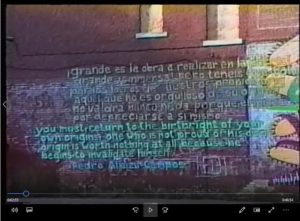 The Library, in Holyoke, Massachusetts, is digitally reformatting 173 videotapes created by Puerto Rican and Latino community leaders and activists in Western Massachusetts between 1991 and 2001. The records illustrate the expansion of Puerto Rican and Latino migration to the region in a period of economic decline. The immigration contributed to debates, in Holyoke and beyond, about poverty, racism, education, and the distribution of scarce resources. In 1991, local Latino leaders began to produce a community access television program about the contributions of Latino and Puerto Rican culture to community life. Once preserved and made publicly accessible, the collection will provide primary source material for students and scholars seeking to understand the political and cultural dynamics of urban life in the 1990s.
The Library, in Holyoke, Massachusetts, is digitally reformatting 173 videotapes created by Puerto Rican and Latino community leaders and activists in Western Massachusetts between 1991 and 2001. The records illustrate the expansion of Puerto Rican and Latino migration to the region in a period of economic decline. The immigration contributed to debates, in Holyoke and beyond, about poverty, racism, education, and the distribution of scarce resources. In 1991, local Latino leaders began to produce a community access television program about the contributions of Latino and Puerto Rican culture to community life. Once preserved and made publicly accessible, the collection will provide primary source material for students and scholars seeking to understand the political and cultural dynamics of urban life in the 1990s.
Kent State University has a large collection and research program relating to Ohio National Guardsmen shooting 13 students, 4 fatally, at a 4 May 1970 demonstration on the campus. The Kent State Libraries May 4 Collection, which has 20 current projects related to the upcoming 50th anniversary of the event, will use its CLIR grant to digitize, preserve, and provide access to hundreds of audio and audiovisual recordings generated following the Kent State shootings.
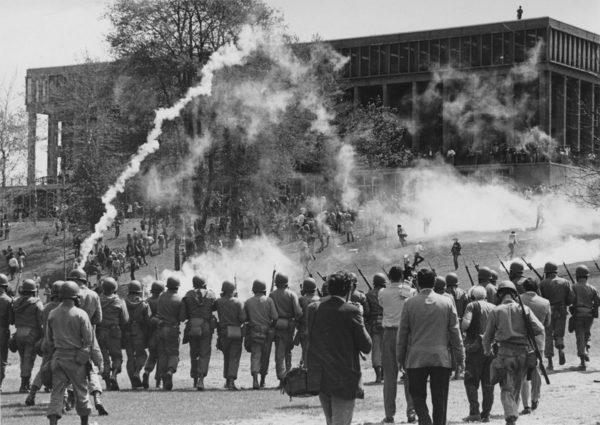
A still much-disputed question about the fateful events of May 4, 1970, is whether Ohio National Guardsmen who shot and killed four Kent State University students and wounded nine did so while obeying a call to fire. That remains much disputed even though some 2,000 people witnessed the shootings. Kent State’s May 4 Visitors Center, which has operated since 2012, provides much visual evidence to historians, faculty members, and students who come looking for answers. The students who were killed or wounded were taking part in or were in the vicinity of a rally against the presence of the Guard on the campus and a protest against President Richard Nixon’s escalation of the Vietnam War into Cambodia when the troops fired for 13 seconds. Officials at the Center say that the audio-guided walking tours of the site that most students and other visitors to the Center take can be confronting. Visitors are commonly shocked to learn how far away the Guardsmen were from most of those they shot — from 60 feet to almost 750 feet — even though Guard commanders claimed their guardsmen opened fire because they were in imminent danger. Image: Kent State University Libraries Special Collections.
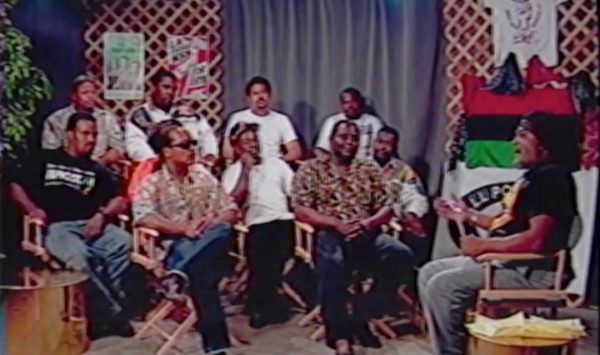
Screen shot from “Message to the Grassroots.” Panelists on 1992 Message to the Grassroots show discuss gang truce efforts. Southern California Library.
Southern California Library will use its grant to digitize and provide access to its collection of 603 tapes from 10 years of the Message to the Grassroots public access television program presented by Michael Zinzun and the Coalition Against Police Abuse between 1988 and 1998. It focused on community activism, particularly in Los Angeles. Tapes include original footage of the 1992 LA Uprising, one of the first meetings for the LA Gang Truce, community efforts to fight against police violence and for basic human rights such as affordable housing, health care, and meaningful employment. The Library will make files of the recordings available through the Internet Archive and Mukurtu, a free, mobile, and open source platform built with indigenous communities to manage and share digital cultural heritage.
Squeaky Wheel Film & Media Art Center, in Buffalo, New York, will digitize material from its Axlegrease collection, which gathers video art and documentary films created by local and national artists that were broadcast on a weekly basis in Western New York between 1987 and 1999 as part of an artist- and activist-led alternative media movement. The CLIR grant will permit Squeaky Wheel to digitize more than 218 hours of content stored on 435 U-Matic tapes, and to make the records available for research and study via password protected Vimeo links. Partnering with local cultural entities, such as Garman Art Conservation Department at Buffalo State College and Lumiflux Media, Squeaky Wheel will produce a documentary and best practice manual based on this project to promote the preservation of at-risk video art in Western New York.
With its CLIR grant, the State University of New York at Geneseo will digitize and make available online through its open-access platform, KnightScholar, 68 VHS tapes and 7 Hi 8mm videos, as well as 498 cassette tapes, from a collection gathered over more than 40 years by ethnomusicologist James Kimball. The collection documents traditional musicians in New York state who specialized in the Eastern square dance tradition. The materials include interviews and community performances of notable fiddlers, square dance callers, dance musicians, and community members whose knowledge bridges 19th century repertory to contemporary practice.
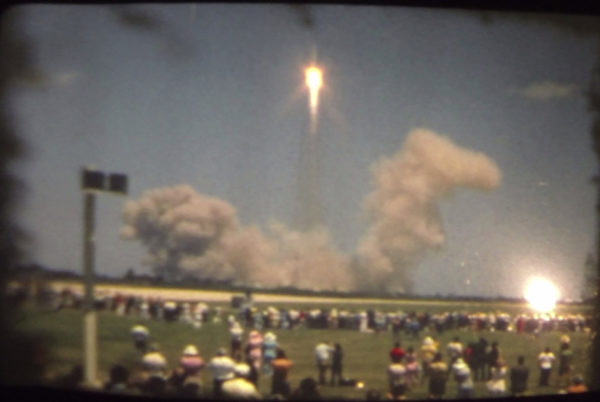 The University of Alabama in Huntsville Archives & Special Collections will digitize, make accessible, and preserve 186 film reels, 9 audio reels, and 53 audio cassettes relating to the Apollo space program. In anticipation of renewed scholarly and popular interest upon the 50th anniversary of the Apollo 11 moon landing, UAH will digitize the home movies of rocket pioneer Konrad Dannenberg, footage of the Apollo 11 launch, and oral history interviews with well-known and ancillary figures in the Apollo missions. UAH will make the material available on-site and via the Omeka content-management system. The history of space exploration is among the focuses of UAH’s special collections, which has more than 1000 linear feet of material documenting individuals and programs related to space history.
The University of Alabama in Huntsville Archives & Special Collections will digitize, make accessible, and preserve 186 film reels, 9 audio reels, and 53 audio cassettes relating to the Apollo space program. In anticipation of renewed scholarly and popular interest upon the 50th anniversary of the Apollo 11 moon landing, UAH will digitize the home movies of rocket pioneer Konrad Dannenberg, footage of the Apollo 11 launch, and oral history interviews with well-known and ancillary figures in the Apollo missions. UAH will make the material available on-site and via the Omeka content-management system. The history of space exploration is among the focuses of UAH’s special collections, which has more than 1000 linear feet of material documenting individuals and programs related to space history.
CLIR has begun accepting applications for its next new Recordings at Risk grant cycle, which begins 1 May 2019.
Related Posts:
Previous Post: The Huntley Footage Service Goes Blogging
Next Post: Denmark Breathes Life into the Original Nordic Noir

